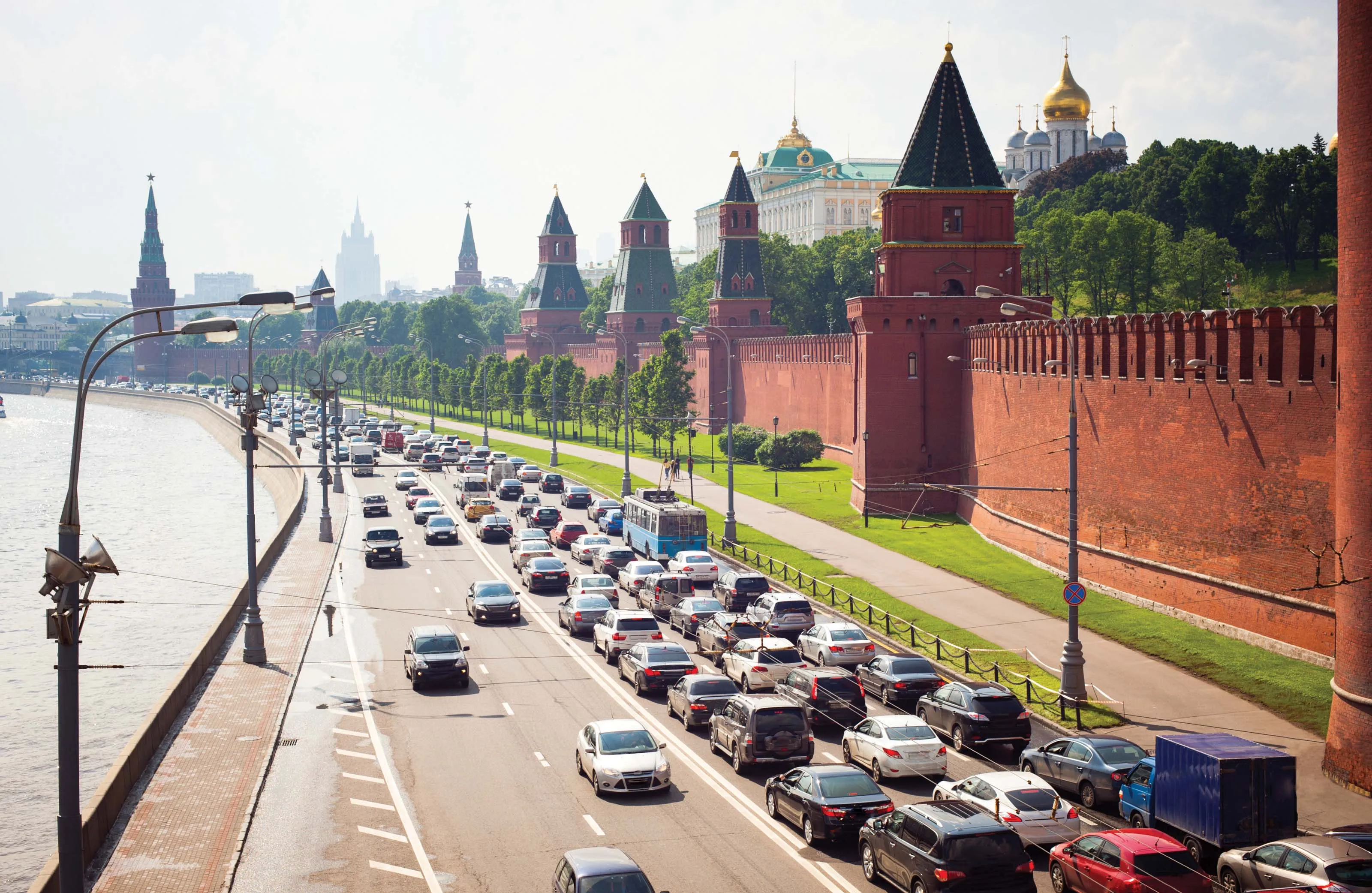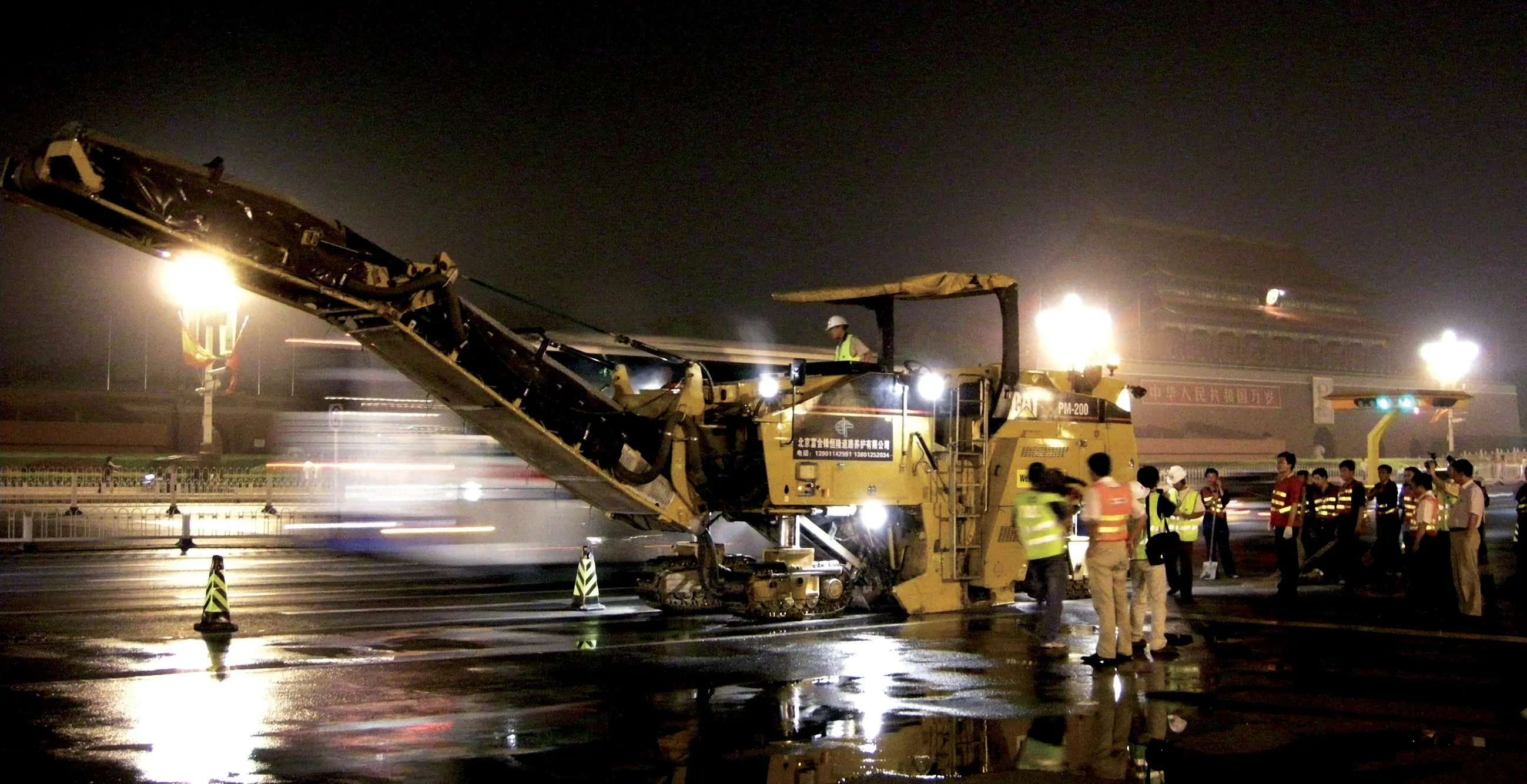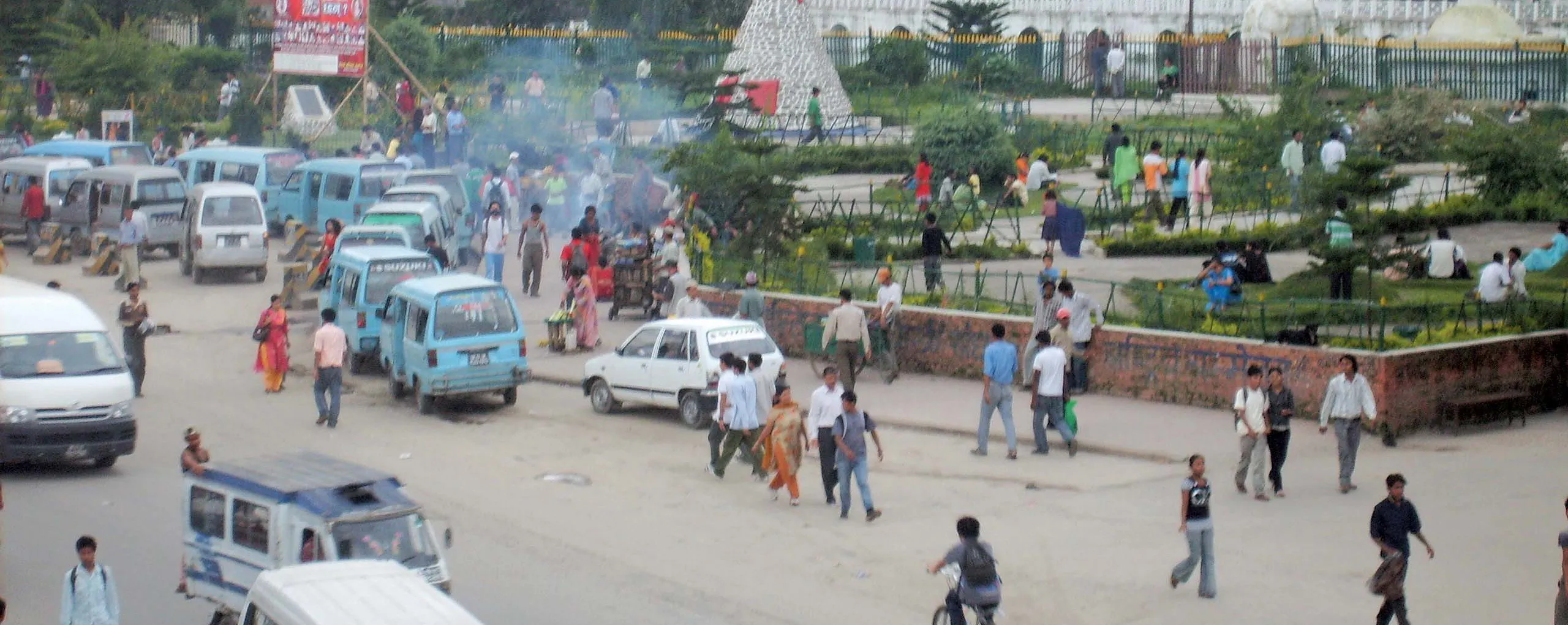A huge investment in road building will expand Moscow’s network – Eugene Gerden reports The government of Moscow plans to invest more than RUB 640 billion (US$20 billion) during the period of 2014-2015 .in a massive investment of road building in the city. This is expected to be part of Moscow city’s Master Plan, which is designed until 2025. Building of new roads is crucial for Moscow and should help the city to solve the problem of traffic jams. Despite all the efforts made by the city’s authorities in re
March 28, 2014
Read time: 6 mins

A huge investment in road building will expand Moscow’s network – Eugene Gerden reports
The government of Moscow plans to invest more than RUB 640 billion (US$20 billion) during the period of 2014-2015 .in a massive investment of road building in the city. This is expected to be part of Moscow city’s Master Plan, which is designed until 2025.
Building of new roads is crucial for Moscow and should help the city to solve the problem of traffic jams. Despite all the efforts made by the city’s authorities in recent years, the situation with traffic in the city still remains complex and continues to deteriorate. This makes Moscow one of the world’s most problematic cities in terms of traffic jams.
According to Sergei Sobyanin, the mayor of Moscow, in addition to traffic jams, the city currently experiences the shortage of new roads and junctions. The existing roads cannot cope with the traffic flow and the city cannot provide normal transport service. In addition, the roads do not allow the introduction of dedicated lanes for public transport, which adds to the inconvenience experienced by the city’s residents. The situation is aggravated by the fact that many of the city’s major roadways are in serious need of renovation and reconstruction.
According to Sobyanin, Moscow’s complex transport situation and its frequent traffic jams have already resulted in a serious decline in foreign investors to the city. "Cars, standing in traffic jams with the running engines, cause enormous damage to the environment, and many investors have already started to stay away the city, where they unable to drive from one end to another within a reasonable time."
The transport situation in the city remains complex despite the fact that during the period of 2011-2013 the Moscow City Government completed the reconstruction of five major routes and in particular the Warsaw, Kashirskoe, Leningradskoe Rublevskoe and Yaroslavlskoe highways.
According to the Moscow City Government, one of the ways to improve the current situation is by building new roads in the city and further reconstruction of existing routes. Marat Khusnullin, deputy mayor for urban policy and construction, said that during last year, 72km of new roads were built in Moscow. It is planned that this year this figure will be set at the level of 83km, in 2015: 91.7km, while in 2016, 109km of roads are expected to be built.
In addition to 83km of new roads scheduled for this year, four raised routes and several tunnels will be built. The plans also involve reconstruction of Moscow’s major highways, and in particular Mozhaisky, Ryazansky, Dmitrovsky, Schelkovsky and the Enthusiasts. There are also plans to finish building the federal highway to Sheremetyevo Airport, to put into operation the second stage of the Halabyan-Baltic tunnel. At the same time about 100km of roads will be allocated for public transport.
Finally, there are also plans to start active road building in the New Moscow area, which is a new administrative centre for the city. It is planned that by 2020 the road network in the region will have increased by 117km.
The Moscow Government also plans to expand the roads and to create special ‘pockets’ for public transport, which will partially solve the problem of traffic jams. A significant attention is expected to be paid on the building of interchanges on outbound routes. In addition, according to Husnullin, the Moscow City Government is ready to build all of the lanes which are needed for the normal functioning of road transport infrastructure during the next three years. There are also plans to solve the problem of so-called bottlenecks on the way out of the city. Khusnullin has also added that as part of these plans 23 lanes should be built.
In the meantime, according to representatives of the Russia Federal Road Agency, implementation of some of these plans may face serious difficulties, associated with the provision of additional land plots. Building of new roads should help to extend the city’s current road network, which is estimated at 3,500km, which is relatively small for the metropolis of such an area and population.
For comparison, in Tokyo, the area and population of which is approximately equal to the Moscow figures, the overall length of the city’s road network is estimated at 28,000km of toll and free roads. One of the reasons of such difference is the rates of housing in Moscow, which are significantly higher than those of Tokyo.
Peter Shkumatov, head of The Society of Blue Buckets, a free protest movement that emerged in Russia in 2010 as a response to the arbitrary, self-serving use of emergency rotating blue flashers by public servants, has welcomed these plans. But Shkumatov has also expressed doubts regarding the accuracy of the declared figures. He commented that Moscow currently does not fare well when compared with other global cities, in terms of the number of roads/km2.
Shkumatov said, "Roads account for only 8% of the territory between the Moscow Ring Road, a ring road encircling the City of Moscow and The Third Ring Road, Moscow's newest beltway, located between the Garden Ring in the city centre and Moscow Ring Road. The majority of territory is allocated for shopping centres, apartment buildings, skyscrapers and other buildings. At present Moscow experiences an acute shortage of roads, while the length of the existing remains small. In fact, Moscow ends after the The Third Ring Road. All other areas can be considered as dormitory, because there is only one road, which leads out of them.”
According to department of construction in the Moscow City Government, last year 105.4 billion rubles ($3,28 billion) were invested in the development and expansion of the city’s road network. It is planned that during the next two years the volume of investments will be increased up to 640 billion rubles. It is expected that part of the funds will be provided by private investors.
Russian analysts believe that this is a huge sum. According to Mikhail Blinkin, a senior analyst of the Institute of Transport and Road Management, currently about two-thirds of federal funding for road construction is invested in Moscow and the Moscow region, which is an incredible concentration of funds in one place.
But the Moscow City Government considers these investments as reasonable. According to Sobyanin, road building in the city will accelerate. Sobyanin said, "We will continue implementation of active road building policy in Moscow in the future. The city needs new interchanges, overpasses, underpasses and other road structures and buildings.”
The government of Moscow plans to invest more than RUB 640 billion (US$20 billion) during the period of 2014-2015 .in a massive investment of road building in the city. This is expected to be part of Moscow city’s Master Plan, which is designed until 2025.
Building of new roads is crucial for Moscow and should help the city to solve the problem of traffic jams. Despite all the efforts made by the city’s authorities in recent years, the situation with traffic in the city still remains complex and continues to deteriorate. This makes Moscow one of the world’s most problematic cities in terms of traffic jams.
According to Sergei Sobyanin, the mayor of Moscow, in addition to traffic jams, the city currently experiences the shortage of new roads and junctions. The existing roads cannot cope with the traffic flow and the city cannot provide normal transport service. In addition, the roads do not allow the introduction of dedicated lanes for public transport, which adds to the inconvenience experienced by the city’s residents. The situation is aggravated by the fact that many of the city’s major roadways are in serious need of renovation and reconstruction.
According to Sobyanin, Moscow’s complex transport situation and its frequent traffic jams have already resulted in a serious decline in foreign investors to the city. "Cars, standing in traffic jams with the running engines, cause enormous damage to the environment, and many investors have already started to stay away the city, where they unable to drive from one end to another within a reasonable time."
The transport situation in the city remains complex despite the fact that during the period of 2011-2013 the Moscow City Government completed the reconstruction of five major routes and in particular the Warsaw, Kashirskoe, Leningradskoe Rublevskoe and Yaroslavlskoe highways.
According to the Moscow City Government, one of the ways to improve the current situation is by building new roads in the city and further reconstruction of existing routes. Marat Khusnullin, deputy mayor for urban policy and construction, said that during last year, 72km of new roads were built in Moscow. It is planned that this year this figure will be set at the level of 83km, in 2015: 91.7km, while in 2016, 109km of roads are expected to be built.
In addition to 83km of new roads scheduled for this year, four raised routes and several tunnels will be built. The plans also involve reconstruction of Moscow’s major highways, and in particular Mozhaisky, Ryazansky, Dmitrovsky, Schelkovsky and the Enthusiasts. There are also plans to finish building the federal highway to Sheremetyevo Airport, to put into operation the second stage of the Halabyan-Baltic tunnel. At the same time about 100km of roads will be allocated for public transport.
Finally, there are also plans to start active road building in the New Moscow area, which is a new administrative centre for the city. It is planned that by 2020 the road network in the region will have increased by 117km.
The Moscow Government also plans to expand the roads and to create special ‘pockets’ for public transport, which will partially solve the problem of traffic jams. A significant attention is expected to be paid on the building of interchanges on outbound routes. In addition, according to Husnullin, the Moscow City Government is ready to build all of the lanes which are needed for the normal functioning of road transport infrastructure during the next three years. There are also plans to solve the problem of so-called bottlenecks on the way out of the city. Khusnullin has also added that as part of these plans 23 lanes should be built.
In the meantime, according to representatives of the Russia Federal Road Agency, implementation of some of these plans may face serious difficulties, associated with the provision of additional land plots. Building of new roads should help to extend the city’s current road network, which is estimated at 3,500km, which is relatively small for the metropolis of such an area and population.
For comparison, in Tokyo, the area and population of which is approximately equal to the Moscow figures, the overall length of the city’s road network is estimated at 28,000km of toll and free roads. One of the reasons of such difference is the rates of housing in Moscow, which are significantly higher than those of Tokyo.
Peter Shkumatov, head of The Society of Blue Buckets, a free protest movement that emerged in Russia in 2010 as a response to the arbitrary, self-serving use of emergency rotating blue flashers by public servants, has welcomed these plans. But Shkumatov has also expressed doubts regarding the accuracy of the declared figures. He commented that Moscow currently does not fare well when compared with other global cities, in terms of the number of roads/km2.
Shkumatov said, "Roads account for only 8% of the territory between the Moscow Ring Road, a ring road encircling the City of Moscow and The Third Ring Road, Moscow's newest beltway, located between the Garden Ring in the city centre and Moscow Ring Road. The majority of territory is allocated for shopping centres, apartment buildings, skyscrapers and other buildings. At present Moscow experiences an acute shortage of roads, while the length of the existing remains small. In fact, Moscow ends after the The Third Ring Road. All other areas can be considered as dormitory, because there is only one road, which leads out of them.”
According to department of construction in the Moscow City Government, last year 105.4 billion rubles ($3,28 billion) were invested in the development and expansion of the city’s road network. It is planned that during the next two years the volume of investments will be increased up to 640 billion rubles. It is expected that part of the funds will be provided by private investors.
Russian analysts believe that this is a huge sum. According to Mikhail Blinkin, a senior analyst of the Institute of Transport and Road Management, currently about two-thirds of federal funding for road construction is invested in Moscow and the Moscow region, which is an incredible concentration of funds in one place.
But the Moscow City Government considers these investments as reasonable. According to Sobyanin, road building in the city will accelerate. Sobyanin said, "We will continue implementation of active road building policy in Moscow in the future. The city needs new interchanges, overpasses, underpasses and other road structures and buildings.”








